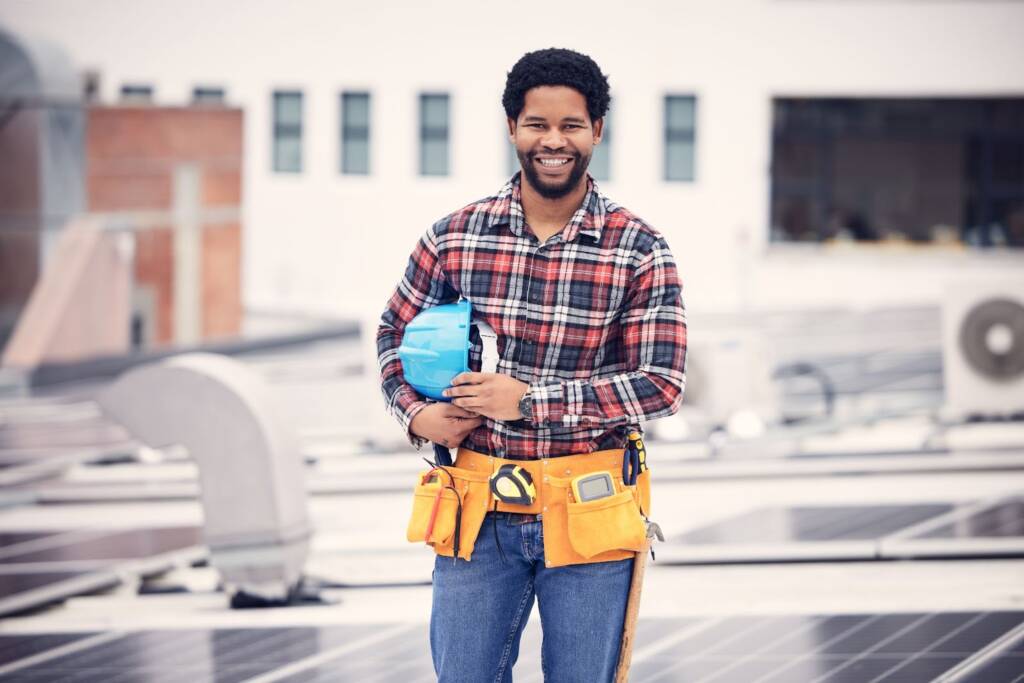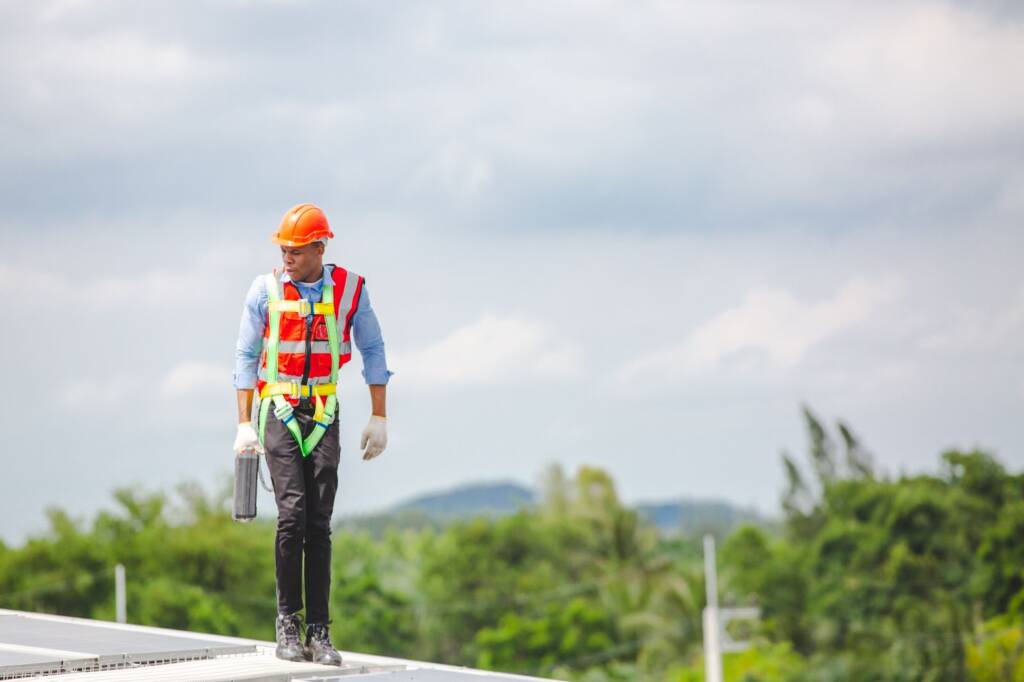Flat roofs are popular for their modern aesthetic and practical design, especially for commercial buildings. They offer extra space for HVAC systems, solar panels, or rooftop gardens. However, replacing these roofs can feel overwhelming. Many business owners and property managers wonder whether the process is manageable or best left to professionals. Knowing what’s involved in a flat roof replacement for commercial buildings helps you plan better and avoid costly mistakes.
What is a Flat Roof Replacement?
Replacing a flat roof means removing old materials and installing new layers to ensure protection and durability. Unlike pitched roofs, flat roofs have a slight slope for drainage but require different materials and installation techniques. This process helps maintain your building’s integrity and prevents water damage or structural issues. Understanding the basics of a commercial flat roof replacement enables you to gauge the effort and resources needed.
Understanding Flat Roof Structures
Flat roofs on commercial buildings aren’t entirely flat; they have a minimal slope for water drainage. Common materials include EPDM rubber, TPO, PVC membranes, and built-up roofing systems. Each material has pros and cons depending on climate, budget, and maintenance requirements. The flat design allows for efficient use of rooftop space, making it popular for commercial structures like office buildings, warehouses, and retail centers. Regular inspections and maintenance are essential to keep the roof functioning effectively.
Signs That You Need a Flat Roof Replacement
Leaks are often the first noticeable sign that your commercial flat roof may need replacing. Other red flags include sagging, water pooling, or visible cracks and blisters in the roofing membrane. Rising energy bills can also indicate poor insulation due to roof damage. Ignoring these signs can lead to extensive water damage and expensive repairs for your business property. Timely replacement ensures your commercial building remains safe and structurally sound.
Important Information About Flat Roof Replacements
The difficulty of replacing a flat roof in a commercial setting depends on several factors. Size, material type, and accessibility can make the process more complex. Weather conditions also play a role, as rain or extreme heat can cause delays. Knowing what challenges to expect can help you decide whether to attempt the replacement yourself or hire a professional:
Factors That Affect Complexity
The size of the commercial roof significantly affects the difficulty of replacement. Larger roofs require more materials and longer installation times. The type of roofing material also matters; some are easier to work with than others. Accessibility issues, such as high-rise buildings or limited space around commercial complexes, can add to the complexity. Weather conditions, including wind, rain, and heat, can also slow the process and increase difficulty.
DIY vs. Hiring a Professional
A flat roof replacement can save money upfront but comes with significant risks. Without the right tools or experience, mistakes can lead to leaks or structural issues. Professionals have the expertise to handle large-scale installations and can spot underlying problems early. Hiring a professional roofing contractor ensures better durability and warranty coverage, and an experienced roofer is typically the safer choice for major commercial roof replacements.
Steps Involved in Flat Roof Replacement
A flat roof replacement for a commercial building follows a detailed process that involves careful planning and execution. Each step is essential to ensure durability and prevent future issues. Understanding the process helps you prepare and avoid surprises:
1. Initial Roof Inspection and Assessment
The first step is conducting a thorough inspection to assess the condition of the current commercial roof. It includes looking for visible damage, such as cracks, blisters, or sagging areas. The inspection also checks for hidden issues, such as moisture buildup beneath the surface. Evaluating the drainage system is equally essential to prevent water pooling. This initial assessment determines the scope of the replacement project.

2. Removing the Old Roofing Material
Once the inspection is complete, the old roofing material must be removed from the commercial structure. This step involves using tools like roofing shovels and pry bars to lift and discard the old layers. Proper safety measures are essential during this phase, especially when working at heights on larger commercial buildings. Removing old materials helps expose any underlying damage that needs attention. Waste disposal should follow local regulations to avoid environmental issues.
3. Installing the New Flat Roof
The installation begins with laying a base layer that provides insulation and support for the commercial building. Next, a waterproof membrane—such as EPDM, TPO, or PVC—is applied to prevent leaks. Sealing the joints and edges is crucial to maintaining a watertight surface. Proper ventilation must be incorporated to avoid moisture buildup under the roof. Each layer must be applied carefully to ensure the roof’s longevity.
4. Final Checks and Maintenance Tips
Once installation is complete, a thorough inspection ensures the commercial roof is secure and leak-free. Look for weak spots or improperly sealed areas that could lead to future issues. Cleaning and clearing drainage systems help maintain the roof’s condition. Routine checks, especially after extreme weather, can extend the life of the new roof. Regular maintenance helps prevent minor issues from becoming costly repairs.
How Long Does a Flat Roof Replacement Take?
The time required for a flat roof replacement on a commercial building varies based on several factors. Roof size, material choice, and weather conditions all play a role. Knowing the expected timeline helps you plan accordingly and avoid disruptions to business operations:
Timeline for Professional Installation
Professional flat roof replacements for commercial properties typically take several days to complete. Smaller commercial roofs may be finished within one to two days, while larger projects can take up to a week or more. Weather delays, such as rain or high winds, can extend the timeline. An experienced contractor can often speed up the process without compromising quality. The efficiency of professionals ensures a smoother and quicker installation for commercial spaces.
Timeline for DIY Roof Replacement
A DIY flat roof replacement for a commercial building generally takes much longer than hiring professionals. Without prior experience, the project could extend for several weekends or months. Unexpected challenges, such as finding hidden damage or adjusting materials, can add time. Careful planning of each phase helps reduce delays. DIY replacements require patience and thorough preparation to be successful.
Costs Involved in Flat Roof Replacement
Replacing a flat roof on a commercial building can be a significant investment, but understanding the costs helps businesses budget effectively. Expenses vary depending on material choices, labor fees, and additional repairs. Awareness of these costs upfront helps avoid financial surprises:
Material Costs
The cost of materials for commercial flat roofs depends on the type you choose. EPDM rubber is generally the most affordable, while PVC and TPO are more expensive but offer better durability. Built-up roofing materials can also vary in cost depending on the number of layers used. Higher-quality materials often last longer and require less maintenance. Investing in durable materials can save money in the long run for commercial buildings.
Labor and Additional Expenses
Labor costs for commercial roof replacements depend on the contractor’s experience and the project’s complexity. Extra expenses can arise from structural repairs discovered during the replacement. Permits, inspections, and insurance costs can add to the total bill. Unexpected issues, such as water damage, may increase costs significantly. Getting detailed estimates helps businesses plan for these additional expenses.

Overcoming Flat Roof Replacement Challenges
Flat roof replacements for commercial buildings present unique challenges affecting the process and outcome. However, understanding these obstacles and how to address them makes the process easier and more efficient. Proactive solutions can save time, money, and stress during the project.
Addressing Weather-Related Issues
Weather conditions can cause delays in a commercial flat roof replacement. To minimize these setbacks, schedule the project during mild seasons. Use weatherproof materials that can withstand unexpected climate changes. Contractors can also use protective coverings to continue work during light rain. Proper scheduling and preparation help prevent weather from disrupting your project.
Solving Structural and Drainage Problems
Commercial flat roofs often face drainage issues, leading to water pooling. A thorough inspection and tapered insulation systems can improve water runoff. Installing additional drainage outlets helps prevent water buildup. During replacement, addressing structural weaknesses, such as wood rot or damaged beams, ensures long-term durability.. Professional contractors can design solutions tailored to your building’s needs.
Flat Roof Replacement Solutions for Lasting Protection
The roof over your business is more than just protection—it’s an investment in the future of your property. Delaying necessary repairs or replacement results in more severe issues and higher costs down the line. Immediate action safeguards your commercial space and boosts its value and energy efficiency. A durable, professionally installed flat roof can be the difference between ongoing expenses and long-term savings. Now is the time to act—secure your building, protect your assets, and set your business up for success.
Don’t let roofing questions go unanswered. Visit our Pinnacle Roofing LLC blog for expert advice and practical tips tailored to your business needs.
